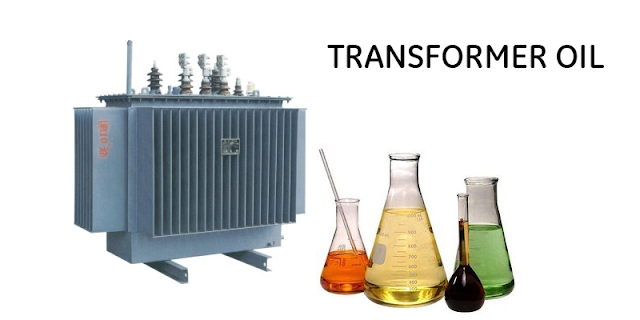Oil-immersed transformers use transformer oil that is
normally obtained by fractional distillation and subsequent treatment of crude
petroleum. This oil is stable at high temperatures and has excellent electrical
insulating properties. It is this oil that decides of the operation and life
expectancy of the transformer it is used in. Transformer oil serves three main
purposes.
·
It creates insulation, in combination with the
insulating materials used in the conductors and coils.
·
It preserves the core and windings that are
completely immersed in it, and acts as a coolant to extract heat from them.
·
It prevents direct contact of atmospheric oxygen
with the cellulose made paper insulation of windings, thus eliminating
oxidation.
Transformer oil is basically composed of four main organic
compounds – aromatics, paraffins, napthenes and olefins – present in the right
proportion for better insulation and stability. This oil is said to be of good
quality only if it has the following properties.
Physical
properties
Viscosity – This property is inversely proportional to
temperature, and determines the rate of flow of the liquid. It is the measure
of the fluid’s resistance to flow. Highly viscous fluids require bigger
clearances for sufficient heat removal. The viscosity of transformer oil is
required to be low at low temperatures. The maximum permissible viscosity level
at 27°C is 27 cSt.
Density – This is the ratio of the weight of oil to its
volume. The temperature of transformer oil also has a great effect on its
density. With increase in temperature, the density decreases. The maximum
permissible density of transformer oil is 0.89 gm/cc at a temperature of
29.5°C.
Pour point – This is the temperature at which the oil
initiates its flow under the prescribed conditions. The average pour point of
the oil should be -6°C.
Flash point – This is the temperature at which the oil gets
vapourized. When this vapour mixes with air, it causes a momentary flash, thus
the name. A high flash point of more than 140°C is required to prevent the risk
of fire.
Chemical
Properties
Acidity – This is the measure of organic and inorganic acids
present in the oil. The value that is required to neutralize the total force of
acid present in one gram of oil is known as the neutralization value. Higher
this value, higher the acidity, thus higher sludge formation, which results in
poor heat conduction that blocks the flow of oil in ducts and in turn impairs
cooling. Therefore, the maximum permissible neutralization value of transformer
oil is 0.03 milligrams KOH/gm.
Oxidation stability – Oxidization increases the
neutralization value of transformer oil. In case of oxidization, this value
must not go beyond 0.4 milligrams KOH/gm in any condition. Also, the total
sludge after oxidization must not be more than 0.1% of the weight of oil.
Sulphur – Transformer oil always contains some traces of
sulphur within. However, this corrosive sulphur should be at its minimized
level or else it will lead to formation of black deposits over the copper parts
of the transformer, thus affecting heat dissipation.
Electrical
properties
Resistivity – Increase in temperature results in decrease of
oil resistivity. Therefore, the transformer oil must have minimum resistivity
of 30 x 1012 ohm-cm at 90°C and maximum resistivity of 1500 x 1012 ohm-cm at
27°C.
Breakdown voltage – This is the voltage at which the
transformer oil starts losing its dielectric property and begins conducting. It
is the presence of moisture, sediments and contaminating agents within the oil
that decreases this property. Therefore, the breakdown voltage of transformer
oil after filtration must be maintained at 60kV.
Dielectric dissipation factor – This is the value that
depicts the poor quality of oil. To have good quality transformer oil, the
maximum permissible value of dielectric dissipation factor should be 0.002 at
90°C.
After checking all of the above properties, you can decide
on whether the oil within your transformer is of good or poor quality. However,
the operating conditions of the transformer constantly affect the quality.
Therefore, you must periodically test your transformer oil so that it can be
filtered or replaced by fresh oil in case of any moisture or suspended
particles within. For the best quality oil-immersed transformers, you can get
in touch with Miracle Electronics, the leading transformer manufacturer in India, known for its top quality
products since more than the past two decades!

No comments:
Post a Comment